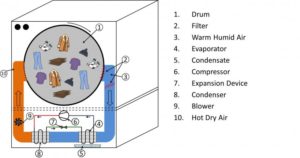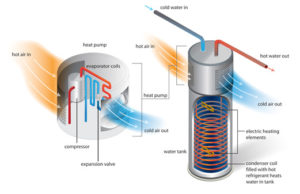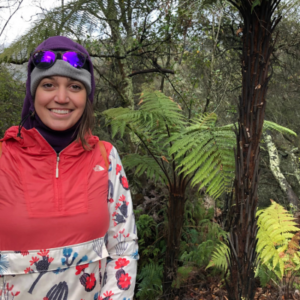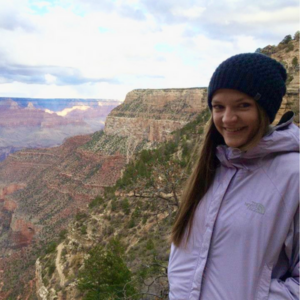Commercial and Residential Rebates
Available Annual Rebates
*Additional rebates may apply for Town of Vail, Town of Avon, Minturn, Town of Eagle and Edwards Metro District residents.
| $1,000/year | Residential Rebate |
|
| $5,000/year | Commercial Rebate |
|
These are in addition to project-specific requirements (which are detailed below)
- Rebates are for existing buildings only.
- Gas/Electric utility account(s) name and number is required prior to completing the home energy assessment.
- Project must be complete, with all equipment installed and in working order.
- Invoices must be within 90-days of applying for a rebate.
- Proof (photos) of completed project required.
- Please provide an electronic version (PDF) of your invoice(s)/receipt(s), and any applicable spec sheets
- Project costs may include materials and labor costs; no tax or permit expenses included.
- Checks mailed 4-6 weeks after receiving completed rebate application & all required documentation.
- Colorado state regulation requires proper disposal of mercury containing lamps (HIDs, all linear and u-bend fluorescents,
CFLs, 2- 4-pin CFLs, and circular fluorescent, as an example). - Rebates may be assigned to the contractor completing the project, and this credit must be shown on the invoice.
- Walking Mountains reserves the right to inspect the project after completion.
- Walking Mountains is not liable for any act or omission of any party, consumer, or contractor whatsoever.
- Walking Mountains is not liable for rebates promised to consumers by a contractor misrepresenting program.
- Rebates are subject to change and/or discontinue without notice; funding is limited.
- Walking Mountains reserves the right to refuse payment if the consumer/contractor violates program rules.
- For information on tax incentives, see this page: https://energysmartcolorado.org/tax-credits-incentives.
- To apply for rebates or enroll for an energy visit go to: https://www.walkingmountains.org/energy.
Questions? Contact an Energy Coach
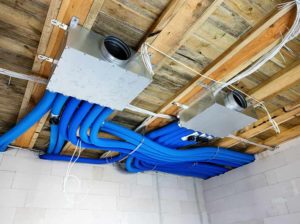
A balanced ventilation system introduces fresh outdoor air into a home at the same rate that stale indoor air is exhausted from the home. Energy Recovery Ventilation (ERVs) and Heat Recovery Ventilation (HRVs) are similar devices in that both supply air to the home and exhaust sale air while recovering energy from the exhaust air in the process.
To Qualify For Rebates:
- Home should be at or below 0.35 Natural Air Changes per Hour (NACH); if not, air sealing must be
done before or in conjunction with ventilation project - Ventilation unit is required to deliver fresh (supply) air to main living/work space and each
bedroom/office, at a minimum - Installation location allows for service and filter maintenance
- All ductwork must be sealed and insulated, or located in a conditioned space
- Equipment must meet all of the following:
- SRE (Sensible Recovery Efficiency) at 70% or higher
- Electrically commuted motors (ECMs)
- Cold climate tested, demonstrated operation to -13°F
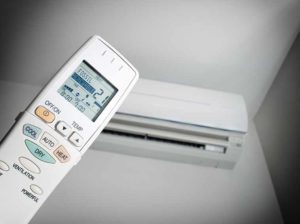
Heat pumps offer an energy-efficient alternative to furnaces and air conditioners for all climates. Like your refrigerator, heat pumps use electricity to transfer heat from a cool space to a warm space, making the cool space cooler and the warm space warmer. Because they transfer heat rather than generate heat, heat pumps can efficiently provide comfortable temperatures for your home year-round.
Ductless, mini-split-system heat pumps (mini-splits) make good retrofit add-ons to houses with “non-ducted” heating systems, such as hydronic (hot water heat), radiant panels, and space heaters (wood, kerosene, propane). They can also be a good choice for room additions where extending or installing distribution ductwork is not feasible.
Like standard air-source heat pumps, mini-splits have two main components — an outdoor compressor/condenser and an indoor air-handling unit.
• Must be “cold climate” rated to -5°F or colder minimum (Eagle County=Climate Zone 6)
• Minimum Coefficient of Performance (COP) @ 5°F of 1.75
• Air Source Heat Pumps Heating Seasonal Performance Factor minimums:
o Ducted HSPF2 of 8.1 or HSPF of 9.6
o Ductless mini-split HSPF2 of 9.5 or HSPF of 11.0
• Outside unit must be elevated at least 12 inches off the ground to defrost properly• Recommended:o load calculation to right size heat pump system and derate for high elevation
o heat pump provides majority of heating load (+/- 80%)
• Learn more about heat pumps:
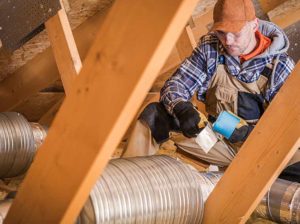
In houses with forced-air heating and cooling systems, ducts are used to distribute conditioned air throughout the house. In a typical house, however, about 20-30% of the air that moves through the duct system is lost to leaks, holes, and poorly connected ducts. The result is higher utility bills and difficulty keeping the house comfortable, no matter how the thermostat is set. More about duct sealing…
To Qualify for Rebates:
- Repair any damaged and disconnected ducts and straighten out flexible ducts that are tangled or
crushed - Seal all leaks and connections with mastic, metal tape, or an aerosol-based sealant
- Seal all registers and grills tightly to the ducts
- Before and after CFM measurements for ducts required
- Insulate ducts to R-6 or higher in unconditioned areas (attics/crawlspaces/garages)
- Recommend evaluating your system’s supply & return air balance, to ensure air return ducts not
too small - Recommend including a new filter as part of any duct system improvement
- Recommend if you have combustion appliances that you ensure there is no back drafting by
getting a CAZ (combustion appliance zone) safety test after ducts are sealed
A heat pump dryer works as a closed-loop system by heating the air using it to remove moisture from the clothes. They are easy to install since they don’t require ventilation and can reduce energy use by at least 28% compared to standard dryers. They also dry laundry at low temperatures, so they are gentler on clothes. More…
To Qualify For Rebates:
- Energy-Star certified dryer with heat pump technology:
www.energystar.gov/productfinder/product/certified-clothes-dryers/results - Learn more about heat pump dryers: www.energystar.gov/products/heat_pump_dryer
Heat Pump Water Heaters can save a household of 4 approximately $350 per year on its electric bills compared to a standard electric water heater and up to $3,750 over the HPWH’s lifetime. Larger families — that typically use more hot water — will save even more! More…
To Qualify For Rebates:
- Energy-Star certified heat pump technology:
www.energystar.gov/productfinder/product/certified-clothes-dryers/results - Learn more about heat pump water heaters: https://loveelectric.org/hot-water
Using a heat tape timer can help make the system run more efficiently when it’s needed and turns it off automatically when it’s not needed. Learn more about heat tape…
To Qualify For Rebates:
- Timer must be hardwired
- Timer is the equipment that will be rebated; project cost may not include new or replacement
heat tape - Recommended: run heat tape during daylight hours – www.holycross.com/wpcontent/uploads/2020/07/Heat-Tape-Basics-with-Rates-from-7-1-1911.2.2020.pdf
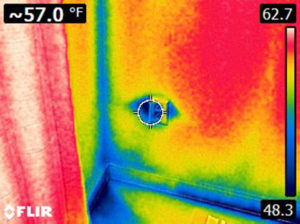
Air leakage occurs when outside air enters and conditioned air leaves a building through cracks and openings in the building envelope (building envelope is the separation of the interior and exterior of a building). Air sealing limits this unintentional air movement by sealing all joints, penetrations, and other openings.
To Qualify For Rebates:
- New windows & window repair qualify here, if all requirements below are met
- Pre- and post-blower door assessment required
- If at/or below 0.35 NACH before or after improvement, you are required to meet with an Energy
Coach at Walking Mountains to understand opportunities for fresh air ventilation, and identify
existing ventilation present in the hom
- If at/or below 0.35 NACH before or after improvement, you are required to meet with an Energy
- Air leakage must be reduced by 10% or more as measured in CFM50 by blower door test
- If Multifamily, the entire building must be air sealed.
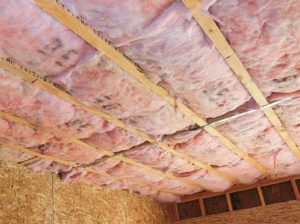
Insulation in your building provides resistance to heat flow and lowers your heating and cooling costs. Properly insulating your building not only reduces heating and cooling costs, but also improves comfort. More…
To Qualify For Rebates:
- Air sealing must be completed prior to adding insulation unless Natural Air Changes per Hour
(NACH) is 0.35 or lower - If Multifamily, the entire building must be insulated; talk to your Walking Mountains Energy Coach about the
blower door test requirement - Must reach the following R-values/details:
- Exterior Wall: Insulate exterior/foundation walls to minimum R-19
- Attic: Insulate floor of unfinished attic to minimum R-60
- Ceiling (no attic): all roof components must be minimum R-60
- Ok to layer foam board insulation externally before replacing the roof covering; ensure
sheathing is in good condition
- Ok to layer foam board insulation externally before replacing the roof covering; ensure
- Floor: Insulate floor of living space above garage/unconditioned crawl to min R-30
- Post-blower door assessment required
- If at/below 0.35 NACH before or after improvement, you are required to meet with an Energy Coach at
Walking Mountains to understand opportunities for fresh air ventilation, and to identify existing
ventilation in the home
- If at/below 0.35 NACH before or after improvement, you are required to meet with an Energy Coach at
By trapping air in the cells of these shades they insulate your windows and minimize the loss of heated or cooled air from inside, which may improve the thermal performance of your home
To Qualify For Rebates:
- Must be double cell or cell-within-a-cell design, and be sized and installed correctly
- For more information: www.energy.gov/energysaver/energy-efficient-window-coverings
To Qualify For Rebates
- Entire building must be air sealed and/or insulated
- Pre- and post-blower door assessment required on one unit per building
- Air leakage must be reduced by 10% or more as measured in CFM50 by blower door test
- Minimum R-value requirements in locations that insulation is improved:
- Exterior Wall: Insulate exterior/foundation walls to minimum R-19
- Attic: Insulate floor of unfinished attic to minimum R-60
- Floor: Insulate floor of living space above garage or unconditioned crawl to min R-30
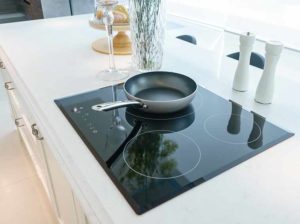
Induction cooking is often considered one of the most efficient cooking technologies. With this technology, up to 90% of the energy consumed is transferred to the food, compared to about 74% for traditional electric systems and 40% for gas.
To Qualify For Rebate:
- Induction cooktop or range
- Learn more about induction cooking: https://loveelectric.org/cooking
This is for encapsulating a crawlspace, making it a conditioned space in your home.
To Qualify For Rebates:
- Condition/Seal entire crawl with minimum 10-mil vapor barrier, sealed to the foundation/footers, encapsulating
the entire space - Air Seal and Insulate Rim Joists with spray foam
- Insulate crawl walls to minimum R-19; no insulation required in crawl ceiling
- Must seal vents
- Post-blower door assessment required
o If at/below 0.35 NACH before or after improvement, you are required to meet with an Energy Coach at
Walking Mountains to understand opportunities for fresh air ventilation, and to identify existing
ventilation in the home
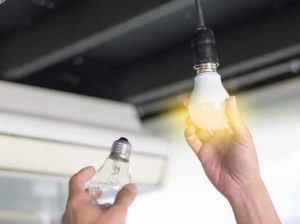
LED lightbulbs use around 85% less electricity than your normal incandescent bulbs, and 50% less than fluorescent tubes.
To Qualify For Rebates:
- ENERGY STAR® or DesignLights Consortium (DLC) certified
- Replace non-LED bulbs with qualifying LED fixtures or bulbs
- Minimum of 30% wattage reduction required for businesses/buildings
To Qualify For Rebates:
- The existing fireplace must be natural gas, propane, or wood
- Must be able to operate new electric fireplace with an option of no heat (flame visual only)
Lighting controls are a range of smart lighting devices that can regulate the levels, quality, and characteristics of light in a defined space. These smart devices aid in reducing electricity wastage while simultaneously encouraging energy efficiency.
To Qualify For Rebates:
- Networked lighting controls (NLC) with wireless networked integrated sensors only
- Control schedule submitted with the rebate application
A radon mitigation system is any system or steps designed to reduce radon concentrations in the indoor air of a building.
Click here to view more radon resources from Walking Mountains.
To Qualify For Rebates:
- Pre and post radon tests required (free radon test kits available at Walking Mountains)
- Ask your installer to use the most Energy Efficient Fan available
- The system must be sized and installed correctly by a qualified radon mitigation contractor
- For more information: https://cdphe.colorado.gov/testing-your-home-radon
For the purchase and installation of automated building controls to monitor, control, and optimize energy usage and transmission; or for the initial cost for setup of a benchmarking system/energy management software. An Energy Management System (EMS) can reduce operational costs, improve overall well-being and productivity, optimize expenses, build a positive brand image, increase property value, and increase ROI.
To Qualify for Rebate
- Must be a new system/trackers/controls where none previously existed
- Provide contractor’s modeled potential energy savings
To Qualify For Rebates:
- Must be related to current or future electrification project(s)
- Wiring and receptacle for easy transition to electric appliance and/or electrical panel upgrade providing extra space, marked with “intent to electrify”
- Invoice must include the purpose of the electrical upgrade
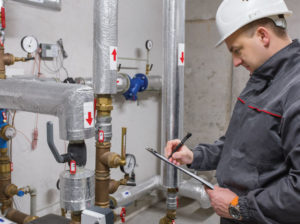
Auditing your building’s energy usage is the first step to building a solid plan for improving energy efficiency.
An ASHRAE Level II audit begins with a Level I audit but takes the data collection and final reporting a step farther and includes more detailed energy calculations and financial analysis of proposed energy efficiency measures.
An ASHRAE Level III audit is an engineering analysis focusing on potential capital-intensive projects. It provides detailed cost and savings calculations required for major capital investment decisions.
To Qualify For Rebates:
- Report must be provided to Walking Mountains
- Must provide contractor’s modeling for potential energy savings
- Must adjust controls as determined by contractor and provide proof
- Rebate only available for an initial report, updated reports do not qualify
A variable frequency drive (VFD) is a type of motor controller that drives an electric motor by varying the frequency and voltage of its power supply.
To Qualify For Rebates:
- Replace single speed motor/pump with VFD
Variable refrigerant flow systems can simultaneously heat and cool different parts of a building. These systems can be very efficient because they can take waste heat captured in one part of the building (e.g. a server room, or the side of the building exposed to direct sunlight) and deliver it to spaces requiring heat.
To Qualify For Rebates:
- Energy Efficiency Ratio (EER) 10+
- Coefficient of Performance (COP) 2+
- VRF must be used as the primary heating and/or cooling source
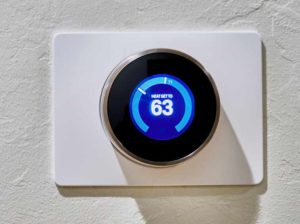
You can save money on your heating and cooling bills by simply resetting your thermostat when you are asleep or away from home. You can do this automatically without sacrificing comfort by installing a programmable thermostat. More…
To Qualify For This Rebate:
- Check compatibility on manufacturer’s website before purchasing
- Learn more about best options: www.energystar.gov/products/smart_thermostats
www.energy.gov/energysaver/programmable-thermostats
Storm Windows: A more cost-effective way to improve the energy efficiency of a home is by installing storm windows. Storm windows add an extra pane of glass over an existing window, increasing energy efficiency and cutting heating and cooling costs by as much as a third. More…
To Qualify For Rebates
- Must be labeled ENERGY STAR® and be sized and installed correctly (INDOW Windows qualify)
- Whole home is not required
- For more information: www.energystar.gov/products/storm_windows_0
- Replace single speed pump with variable speed drive (VSD)
- Recommend labeled ENERGY STAR®
- Replace any single speed motor with EC/Variable Speed Motor
- Applications include heating, cooling, ventilation, and refrigeration
Rebate is to add a new economizer where one does not exist.
- Economizer shall provide first stage cooling; mechanical cooling will start at second stage
- Economizer control shall include an outside air temperature sensor
- Any size air-handling unit will qualify
- Annual maintenance is recommended to ensure proper function over time
- Learn more:
o https://www.energystar.gov/products/low_carbon_it_campaign/12_ways_save_energy_data_center/air_side_economizer
o https://www.pnnl.gov/projects/om-best-practices/air-sideeconomizers#:~:
text=side%20economizing%20equipment.-
,Description%20of%20Technology,when%20outdoor%20conditions%20are%20favorable
Specific rebate details shown above are annual max amounts per household (which may go towards one or more projects until max is reached). All rebate rules listed at the top of this page apply. Each measure has specific requirements to qualify, please talk with an Energy Coach at Walking Mountains before starting your project.
